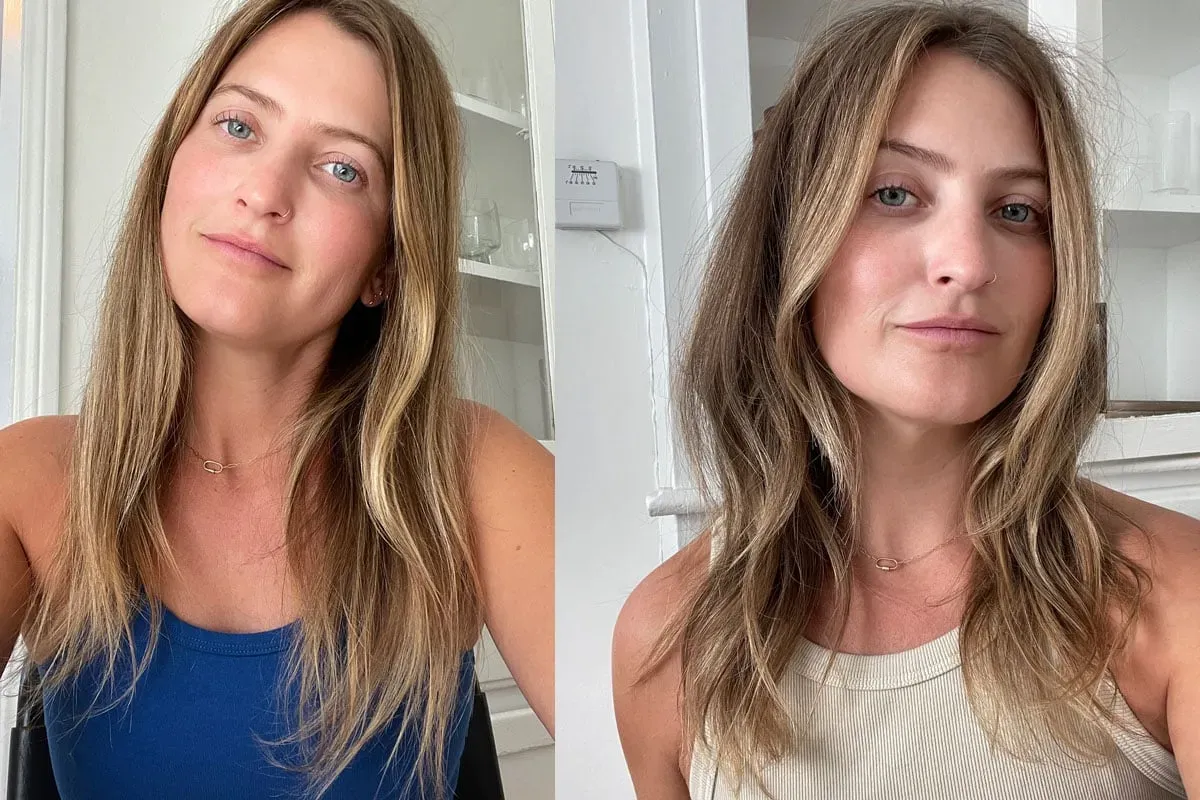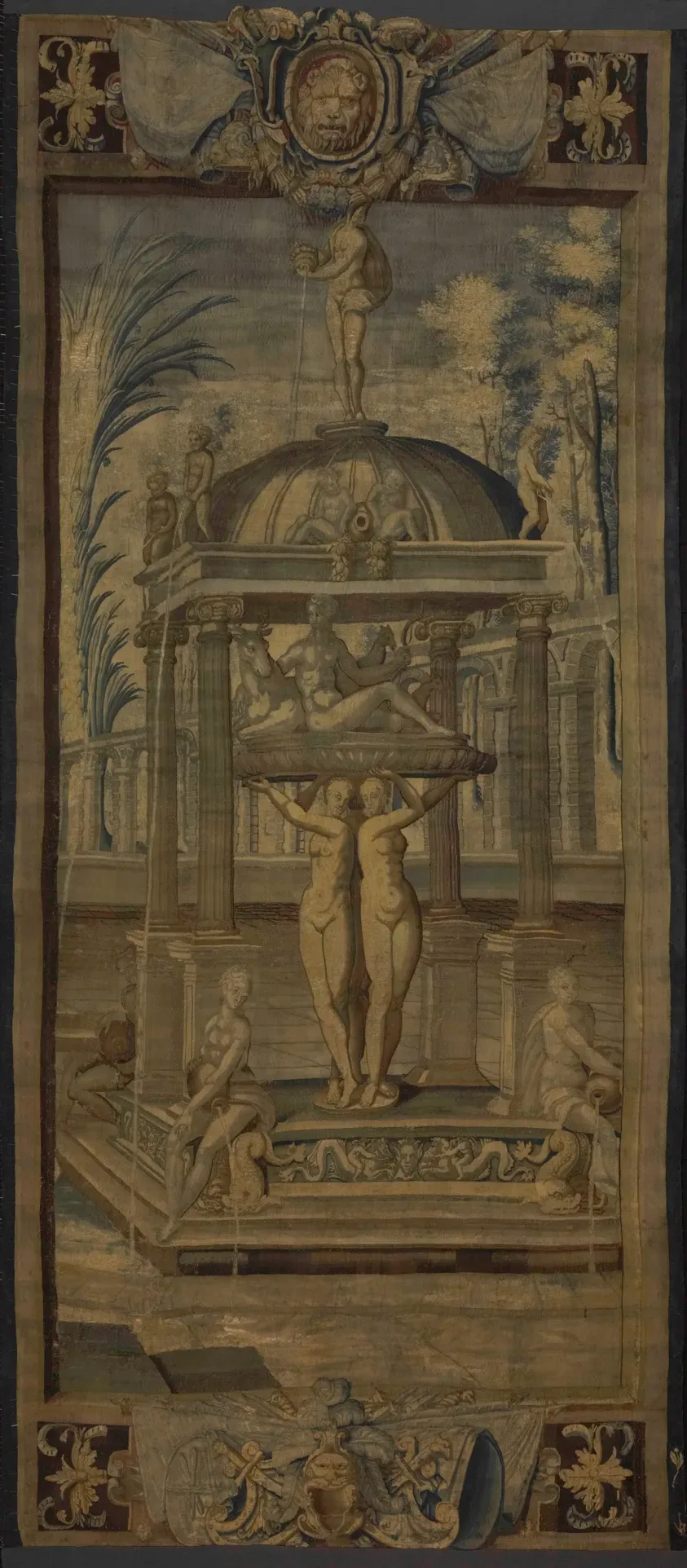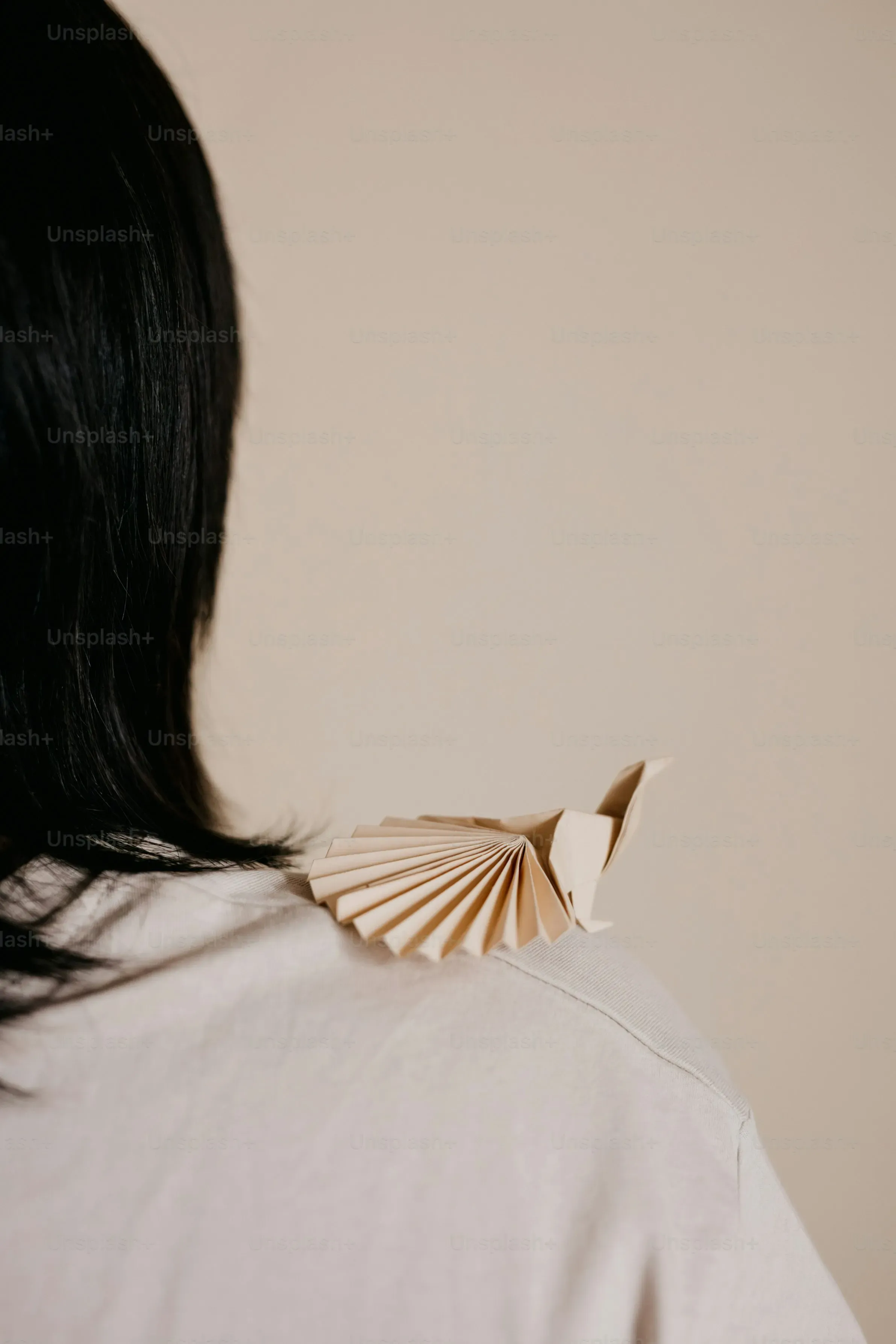Table of Contents
Let's be real, dealing with thin hair can feel like a constant battle. You scroll through endless feeds, seeing voluminous styles, and wonder if your fine strands are destined for a life of flatness. It's frustrating when every attempt at adding body seems to fall flat (literally). You've probably heard the buzz about the "butterfly cut" taking over TikTok and salons everywhere. It looks gorgeous on folks with thicker hair, but if your hair is on the finer side, you're probably asking the million-dollar question: is the **butterfly cut good for thin hair**?
What exactly is the "Butterfly Cut" anyway?

What exactly is the "Butterfly Cut" anyway?
More Than Just Layers
so you've seen the pictures, the videos, the dramatic flips. But **what exactly is the "Butterfly Cut" anyway**? Think of it as a modern take on the classic layered look, but with a specific goal: creating maximum volume and movement without sacrificing length. It's not just random chopping. This cut is strategically designed to mimic the shape of butterfly wings – shorter layers frame the face, fluttering around your cheeks and jawline, while longer layers sit underneath, providing weight and keeping the length.
It's a clever optical illusion, really. The shorter pieces give you that instant lift and bounce around the face, making it look like you have significantly more hair, especially when styled. Meanwhile, the longer sections prevent the overall look from becoming too thin or wispy at the ends, which is a common problem with traditional layering on fine hair.
The Strategic Layering Breakdown
The magic of this cut lies in its two distinct sets of layers. The key players are the face-framing layers. These are cut shorter, often starting anywhere from the cheekbone down to just below the chin. They are the "wings" you see when the hair is styled back or parted. Then you have the longer layers throughout the rest of the hair. These are blended to connect with the shorter face-framers but keep the bulk of the length.
A good stylist will tailor these layers to your specific hair texture and face shape. For thinner hair, the blending is crucial. You don't want harsh lines or too many layers that remove necessary bulk. It's about creating internal movement and lift with fewer, well-placed layers rather than chopping away density.
Key Features of the Butterfly Cut:
- Face-framing layers (the "wings")
- Longer layers underneath
- Designed for volume and movement
- Keeps overall length
- Strategic, not excessive, layering
The Overall Vibe
The result is a style that feels full of life and surprisingly versatile. When styled, those face-framing layers give you that gorgeous, bouncy look reminiscent of the late '90s and early 2000s blowouts that are back in vogue. But even when air-dried, the layers encourage natural movement and prevent the hair from lying completely flat against your head. It aims for a polished, refined look that still feels effortless. It's less about sharp, edgy layers and more about soft, flowing movement that enhances the hair's natural texture.
Why the Butterfly Cut is Good for Thin Hair: Adding Volume Where You Need It

Why the Butterfly Cut is Good for Thin Hair: Adding Volume Where You Need It
The Volume Illusion: How Layers Help
so you know the feeling. You get layers hoping for volume, and instead, your ends look thinner than ever. It's a common tragedy for fine-haired folks. This is where the strategic design of the butterfly cut comes in. It's not about hacking off chunks of hair randomly. The shorter, face-framing layers are the key. By cutting these pieces shorter, you create a distinct separation from the longer length. This separation is what generates lift and the *appearance* of fullness, especially around the face where you and everyone else look most often. It’s like giving your hair its own built-in scaffolding. These layers are lighter, so they don't weigh down the rest of your hair, allowing for easier bounce and movement.
Avoiding the 'Stringy' Problem
Traditional layering on thin hair often leads to sparse, stringy ends because density is removed throughout the length. The butterfly cut minimizes this risk. The bulk of your length remains untouched or has very long, minimal layers blended in. The volume is created higher up, near the crown and around the face, leaving the ends looking fuller than they would with layers cut straight down. It's about concentrating the volume where it's most effective and visible, rather than thinning out the entire head. This specific technique is why many stylists recommend the **butterfly cut good for thin hair** – it addresses the volume issue without sacrificing precious density at the bottom.
So, why does this cut stand out for thin hair?
- Concentrates volume around the face and crown.
- Prevents ends from looking thin or sparse.
- Lighter layers encourage lift and movement.
- Creates an optical illusion of fuller hair.
- Requires less aggressive layering overall compared to some styles.
Styling Your Butterfly Cut for Thin Hair: Tips and Tricks
Mastering the Blowout for Lift
Alright, you've got the cut. Now comes the fun part: making those layers sing. The classic butterfly look practically screams "bouncy blowout." Don't panic if you're not a salon pro. The key here is focusing on those face-framing layers and the crown. Start with damp hair. Apply a volumizing mousse or spray at the roots – seriously, this is non-negotiable for thin hair. Grab a medium or large round brush. As you blow-dry, lift the hair at the root and roll the brush down, directing the airflow from root to tip. For those face-framers, roll the brush away from your face to get that outward flip. Pin the sections up as they cool to really lock in the shape. It takes a little practice, sure, but the payoff in volume is worth the effort. Think of it as a mini workout for your arms.
Products and Techniques for Added Oomph
Let's talk products because even the best cut needs a little help sometimes, especially with thin hair. Beyond the volumizing mousse, a good root-lifting spray applied directly to the scalp before drying is your best friend. Dry shampoo isn't just for refreshing; spraying it at the roots after styling adds grit and texture, making your hair look thicker and giving it hold. When you're styling, don't just brush straight down. Flip your head upside down and rough dry the roots for a minute to build initial volume. Once upright, use your fingers to style and separate the layers rather than a brush, which can flatten thin hair. Finishing sprays should be light; anything too heavy will weigh everything down and defeat the purpose of the cut.
Here are a few product types that help boost volume:
- Volumizing Mousse (apply mid-lengths to ends)
- Root Lifting Spray (target the scalp)
- Texturizing Spray (use mid-lengths down for grip)
- Dry Shampoo (for root lift and texture)
- Lightweight Hairspray (for hold without stiffness)
Real Results: Does the Butterfly Cut Actually Work for Thin Hair?

Real Results: Does the Butterfly Cut Actually Work for Thin Hair?
My First Impression (and Maybe Yours Too)
so you've seen the perfect styled photos online, but does the butterfly cut actually work for thin hair in the real world, outside of a professional photoshoot? My first thought after getting it was, "Alright, let's see if this is just hype." Initially, especially after the salon blowout, my hair felt *amazing*. It had bounce, it had movement, and those face-framing pieces actually stayed put instead of wilting immediately. It felt lighter, but not in a way that made it look sparse. The volume around my face was noticeable, and it did create that illusion of having more hair than I actually do. It wasn't a miracle cure turning my fine hair into a thick mane overnight, obviously, but it genuinely looked fuller and had more life than with my previous blunt cut or standard layers that just disappeared.
The Reality Check: What to Expect Day-to-Day
Now, the real test comes after you wash it yourself. Can you recreate that salon magic? It takes some effort, let's be honest. Air drying a butterfly cut on thin hair usually won't give you those dramatic flips you see online. It helps with natural movement, preventing that flat, plastered-to-the-head look, but the true "butterfly" effect requires heat styling – a round brush, a Dyson Airwrap, or even just curling the ends and face-framers away from your face. The good news is, because the layers are strategic, styling *is* easier than trying to coax volume out of a blunt cut. Products are still your friend (volumizing mousse, root spray!), but the cut gives them something to work *with*. So, while the **butterfly cut good for thin hair** claim holds up in terms of providing a better *foundation* for volume and movement compared to many other styles, don't expect it to style itself.
Here's a quick reality check:
- Salon blowout looks fantastic, but requires effort at home.
- Air drying helps with natural movement but less dramatic volume.
- Styling tools (round brush, curling iron) are key for the full effect.
- Products are still needed, but the cut enhances their performance.
- It adds *apparent* volume and movement, not actual hair density.
So, Is the Butterfly Cut Actually Good for Thin Hair? The Final Word
Alright, let's wrap this up. The short answer is yes, the butterfly cut *can* be a decent option if you have thin hair, but it's not a magic wand. It relies on specific layering techniques to create the illusion of volume and movement, particularly around the face. Done well, it can absolutely add some much-needed life to fine strands that often lie flat. However, piling on too many layers can backfire, making thin hair look even sparser. It requires a skilled stylist who understands how to tailor the cut to your specific hair density and texture. And while it might make air-drying a little more forgiving, you'll likely still need some strategic styling and the right products – think root lifts and texturizers – to get that full, fluttery effect you see online. It's not effortless volume, but it offers a fighting chance.